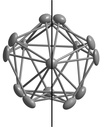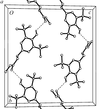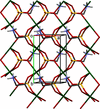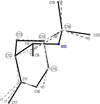issue contents
November 2014 issue

Cover illustration: On heating a crystal of the one-dimensional coordination polymer catena-poly[[diaqua(sulfato)copper(II)]-![[mu]](/logos/entities/mu_rmgif.gif) 2-glycine] to 435 K in an oven, its aspect changed from blue to a very pale blue. Crystal structure analysis indicated that it had undergone a single-crystal to single-crystal (SCSC) solid-state transformation, losing two water molecules and forming a two-dimensional coordination polymer, viz. poly[
2-glycine] to 435 K in an oven, its aspect changed from blue to a very pale blue. Crystal structure analysis indicated that it had undergone a single-crystal to single-crystal (SCSC) solid-state transformation, losing two water molecules and forming a two-dimensional coordination polymer, viz. poly[![[mu]](/logos/entities/mu_rmgif.gif) 2-glycine-
2-glycine-![[mu]](/logos/entities/mu_rmgif.gif) 4-sulfato-copper(II)]. See Stoeckli-Evans, Sereda, Neels, Oguey, Ionescu & Jacquier [Acta Cryst. (2014), C70, 1057-1063].
4-sulfato-copper(II)]. See Stoeckli-Evans, Sereda, Neels, Oguey, Ionescu & Jacquier [Acta Cryst. (2014), C70, 1057-1063].
research papers










































 journal menu
journal menu





































